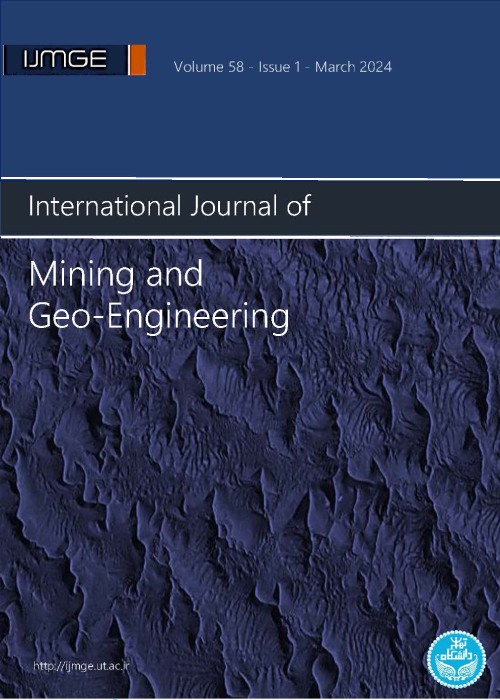A Statistical-Probabilistic Pattern for Determination of Tunnel Advance Step by Quantitative Risk Analysis
Author(s):
Article Type:
Research/Original Article (دارای رتبه معتبر)
Abstract:
One of the main challenges faced in design and construction phases of tunneling projects is the determination of maximum allowable advance step to maximize excavation rate and reduce project delivery time. Considering the complexity of determining this factor and unexpected risks associated with inappropriate determination of that, it is necessary to employ a method which is capable of accounting for interactions among uncertain geotechnical parameters and advance step. The main objective in the present research is to undertake optimization and risk management of advance step length in water diversion tunnel at Shahriar Dam based on uncertainty of geotechnical parameters following a statistic-probabilistic approach. In the present research, in order to determine optimum advance step for excavation operation, two hybrid methods were used: strength reduction method-discrete element method- Monte Carlo simulation (SRM/DEM/MCS) and strength reduction method- discrete element method- point estimate method (SRM/DEM/PEM). Moreover, Taguchi analysis was used to investigate the sensitivity of advance step to changes in statistical distribution function of input parameters under three tunneling scenarios at sections of poor to good qualities (as per RMR classification system). Final results implied the optimality of the advance step defined in scenario 2 where 2 m advance per excavation round was proposed, according to shear strain criterion and SRM/DEM/MCS, with minimum failure probability and risk of 8.05% and 75281.56 $, respectively, at 95% confidence level. Moreover, in either of normal, lognormal, and gamma distributions, as the advance step increased from Scenario 1 to 2, failure probability was observed to increase at lower rate than that observed when advance step in scenario 2 was increased to that In Scenario 3. In addition, Taguchi tests were subjected to signal-to-noise analysis and the results indicated that, considering the three statistical distributions of normal, lognormal, and gamma, under the scenario with poor section, effect of normal stiffness of joints on excavation advance step was larger than the effect of other parameters. Accordingly, with increasing RMR quality, normal stiffness of joints was seen to decrease, so that deformability modulus became more significant.
Keywords:
Language:
English
Published:
International Journal of Mining & Geo-Engineering, Volume:51 Issue: 2, Summer and Autumn 2017
Pages:
161 to 176
magiran.com/p1778421
دانلود و مطالعه متن این مقاله با یکی از روشهای زیر امکان پذیر است:
اشتراک شخصی
با عضویت و پرداخت آنلاین حق اشتراک یکساله به مبلغ 1,390,000ريال میتوانید 70 عنوان مطلب دانلود کنید!
اشتراک سازمانی
به کتابخانه دانشگاه یا محل کار خود پیشنهاد کنید تا اشتراک سازمانی این پایگاه را برای دسترسی نامحدود همه کاربران به متن مطالب تهیه نمایند!
توجه!
- حق عضویت دریافتی صرف حمایت از نشریات عضو و نگهداری، تکمیل و توسعه مگیران میشود.
- پرداخت حق اشتراک و دانلود مقالات اجازه بازنشر آن در سایر رسانههای چاپی و دیجیتال را به کاربر نمیدهد.
دسترسی سراسری کاربران دانشگاه پیام نور!
اعضای هیئت علمی و دانشجویان دانشگاه پیام نور در سراسر کشور، در صورت ثبت نام با ایمیل دانشگاهی، تا پایان فروردین ماه 1403 به مقالات سایت دسترسی خواهند داشت!
In order to view content subscription is required
Personal subscription
Subscribe magiran.com for 70 € euros via PayPal and download 70 articles during a year.
Organization subscription
Please contact us to subscribe your university or library for unlimited access!


